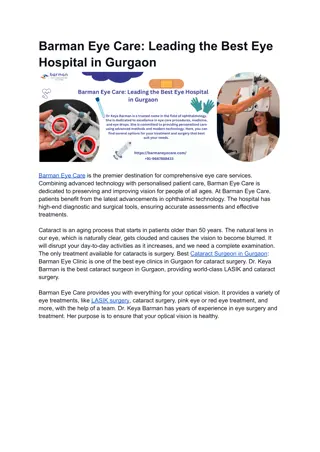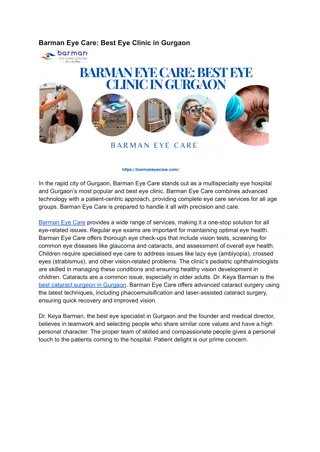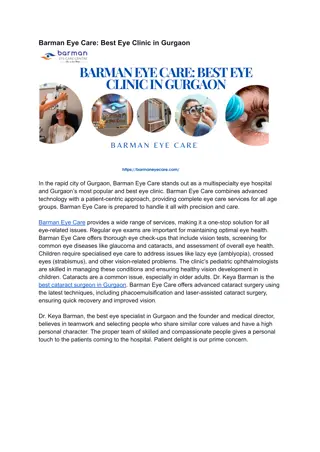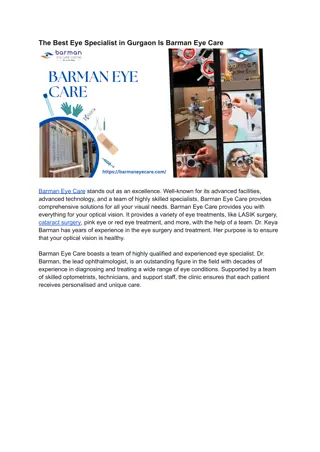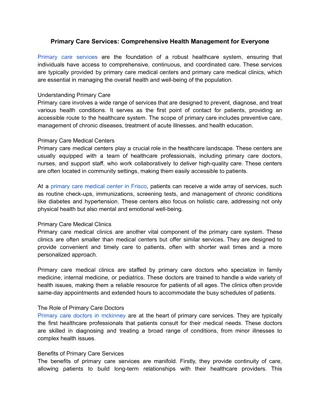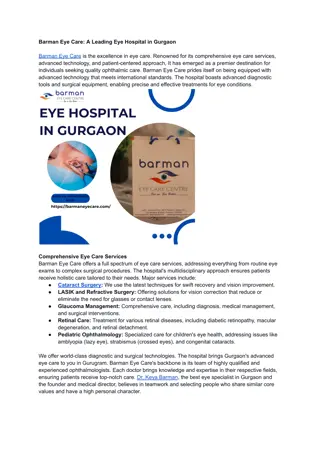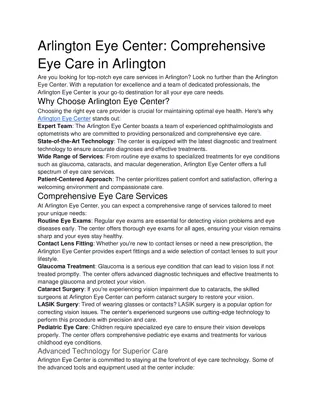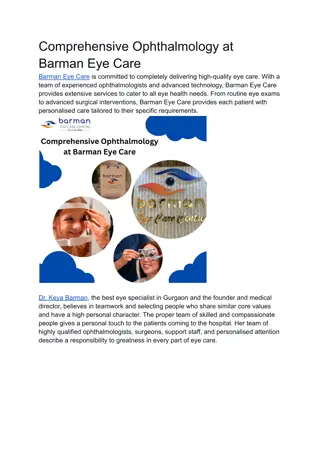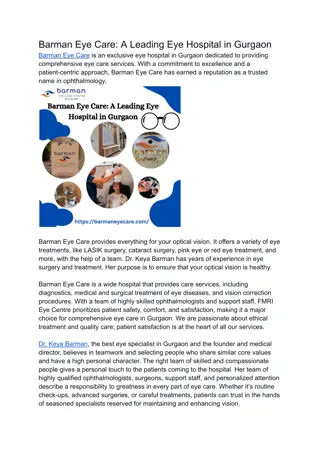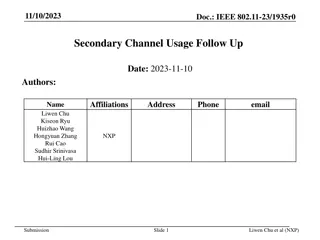The Role of Secondary Eye Care in Relation to Primary Eye Care
Secondary eye care services, located in hospital settings, play a crucial role in providing specialized diagnostics, treatment, and rehabilitation to a large population. They serve as the first contact point for specialist services, contributing to successful referral pathways and collaborative partnerships with primary eye care services. This collaboration between primary and secondary levels ensures timely and appropriate care, reducing the burden on secondary services and enhancing patient outcomes through constant evolution and communication.
Download Presentation

Please find below an Image/Link to download the presentation.
The content on the website is provided AS IS for your information and personal use only. It may not be sold, licensed, or shared on other websites without obtaining consent from the author. Download presentation by click this link. If you encounter any issues during the download, it is possible that the publisher has removed the file from their server.
E N D
Presentation Transcript
Role of secondary eye care in relation to primary eye care June 13 2022 Daksha patel
Primary eye care and primary health care services are widespread, located closest to the community Referral Support Secondary eye care located in a hospital setting, often serving a population of 1 million First contact point for specialist services Eye team includes an ophthalmologist, optometrist, clinical officers ophthalmic nurse Services diagnostics, treatment ( medical and surgical) and rehabilitation
Referral Pathways SUCCESS depends on Agreed protocols Communications two way Timeframes agreed mutually Direct pathways to hospital level based on agreed protocols Referral to agreed outreach locations Referral supported with teleophthalmology
Support role Feedback on referred patient - Eye care + medical care Eye Clinic Training on referral and protocols Training Plan and coordinate outreach activities with PECWs Sharing information and evidence
Collaborative partnership between primary and secondary level Horizontal level of care Primary level services are central to the prevention and early detection of eye diseases Build the trust and support within communities and patients Reduce the burden on secondary services Vertical level of care Appropriate and timely referral and feedback Agreed and communicated linkages provides better services Protocols and guidelines with training Team approach is constantly evolving ( m-health, outreach, competencies)



